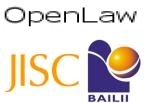

United Kingdom House of Lords Decisions
You are here: BAILII >> Databases >> United Kingdom House of Lords Decisions >> Merrell Dow Pharmaceuticals Inc v HN Norton & Co Ltd [1995] UKHL 14 (26 October 1995)
URL: http://www.bailii.org/uk/cases/UKHL/1995/14.html
Cite as: (1996) 19(1) IPD 19004, [1996] RPC 76, [1995] UKHL 14, (1997) 33 BMLR 201